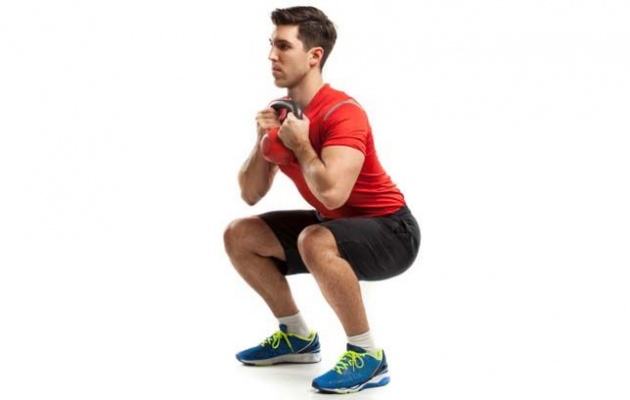Even though the squat is a straightforward exercise, there are still some common pitfalls that can keep you from nailing perfect form.
"Since it’s a multi-joint exercise involving your ankles, knees, and hips, there are multiple places where muscle tightness, immobility, and weakness can inhibit the movement," says Nick Murtha, an expert trainer for Men's Health Thrive. One of the biggest form-sabotaging culprits: your hips.
Tight hip flexors or weakness from prolonged sitting can lead to instability in the hip joint, which causes your pelvis to naturally tilt forward or backward when you squat. "Unfortunately that can put your spine at risk for injury," says Murtha.
But there’s a quick fix: Murtha recommends elevating your heels onto a low board or weight plate while you do the exercise. The elevation will naturally shift your weight and help you to better engage your core muscles, so your hips maintain a more stable position throughout the movement.
Start with a 2-inch elevation. As you gradually build strength in your glutes, hips, and core, work your way down to a half an inch—and eventually back to the floor.




